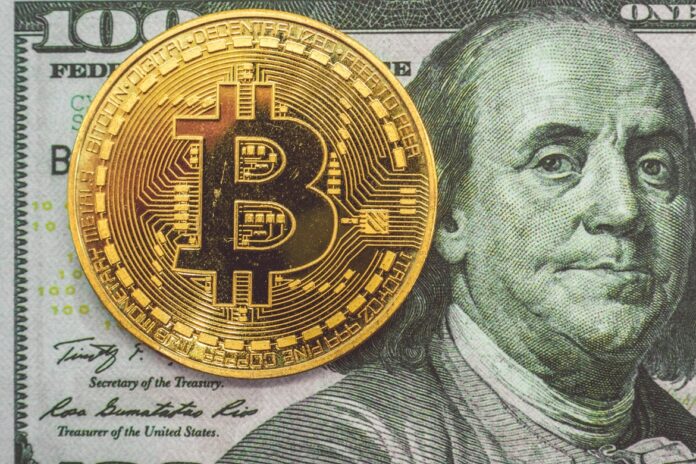
Since we are living in a digital era, we are practically surrounded by a lot of different technologies. Even some of the simplest activities we have throughout the day are now filled with a digital solution. While this is something a majority of people love, a small percentage doesn’t enjoy it as much.
It was just a matter of time before we get digital money. We can see that this topic was widely explored in a high number of movies in the last couple of decades. Still, it is quite obvious that this is something that has become a reality for our world. However, it needs to be developed more in the future.
The story begins back in 2009 when Bitcoin has officially introduced to the public. In the beginning, the situation was not clear about this concept. However, we can see that the perception of the public is widely different from what it was a decade ago. One of the reasons why the popularity has increased is a massive adoption that has occurred in the last couple of years.
Developing currency is directly connected to the use of continuously improving technology and making innovations. Along with the development of financial technology that has enabled it to transition into the digital world, it inevitably would lead to the development of digital currencies. It is one of the reasons why we’ve said that the future now becomes a standard in our lives.

As with a lot of technological advancements early in the day, many financial technologies were looked down on with scepticism. But now, they are essential to get our financial systems functioning smoothly and provide stability during critical times. There are many different reasons why the general public has a much more favorable opinion about this concept. For instance, we can see that transactions are much faster than with any other channel you are used to.
The recent pandemic has only accelerated the already present digitalisation of payments. Adopting new technologies, new knowledge, and production methods led to the development of new information and, subsequently, dramatic changes in the financial industry. For this reason, we can see that there are a lot of people who are still not aware of all the crucial facts about this concept, even though this concept has been quite long among us.
Cryptocurrency is one of those previously frowned upon innovations but is now starting to rise in value and popularity. If we take a look at today’s market, and the value of the biggest players, there is no surprise about why these are so popular today. It is the reason why so many traders want to invest their money.
The treatment of cryptocurrencies has been very controversial for many years now. There is a huge distrust from the finance industry during its early stages. And although the initial distrust was justified, the situation is changing with the pandemic hastening the digitalisation of the financial sector. Now, we can see that the situation is widely different. The only difference between these two statuses is the knowledge people have obtained in the meantime.

Digital currencies originally had purely academic intentions. It was impossible to counterfeit, provided anonymity, and had a network limited to only enthusiasts. But because of the blockchain technology behind it and the opportunities it provided, these started to gain significant interest. It resulted in what we have today in front of us. It is not something we can call a new thing nowadays.
The digital currency was a movement that tried to take off in the 80s, but it wasn’t until 2008 where Satoshi Nakamoto, the creator of BTC, published their white paper “Bitcoin: A Peer-to-Peer Electronic Cash System” and released the first BTC software in 2009. Since then, the concept has been rising in popularity in the Finance and Payment Sectors to provide new and unique takes on how to speed up the digitalisation of payments.
If you’re looking to get into crypto, the team behind CryptoGenius recommends starting with the most well-established digital currency, BTC. Head on over to their site to get a jumpstart on your investment today. Naturally, it is not easy to follow all of these trends, both when we are talking about software and market movements. So, narrowing down the list of possibilities is an absolute must when you are about to make a decision. Otherwise, you can get overwhelmed quite easily.
Of course, cryptocurrency isn’t without its flaws. It has been plagued with controversies regarding its environmental impact, volatility, and instability but is slowly showing improvement as a solid and feasible form of currency. Nevertheless, we can see that this concept is easily the most profitable investment you can make today. The trick is, you need to monitor market movements and act accordingly. Therefore, make sure you gather all the relevant information before you make any move.

One of the best and probably the most known success stories is BTC. It used to be neglected, but today the digital asset is the most popular and reliable of its kind and has passed the one trillion-dollar market cap. There is no doubt that this concept is set to be the start of the rise in digital payments. Even though there were a lot of ups and down in this story, it is the best example of what cryptos can achieve over the years. Plus, we don’t believe that BTC will be overcome by any other player on the market.
Part of what makes cryptocurrency unique is its decentralisation. It is a way of conducting transactions without intermediaries like banks, therefore making it faster, more convenient, and transparent. And because third parties are eliminated, the cost per peer-to-peer transaction is also reduced. This also allows international businesses to conduct their transactions one-on-one without the complications and added fees that come with international currency exchanges. Delegation in crypto has also allowed a wider scope of people to gain access to payments and credits.
However, despite the strong security and the decentralised nature of this concept, it still requires regulation to stabilise the fluctuating market and allow a fuller adoption of the technology. Both traditional money and crypto, when assessed as an exchange medium, follow the same purpose. They both deliver utility instead of perceivable value like gold or oil. Fiat currency’s value depends on the government’s decisions, while digital currencies are dependent on regionalized ledgers.
This means that the growth potential for the concept is reliant on the government’s uncertainties regarding control. Fiat currencies are fully controllable, which makes decentralisation in cryptocurrencies the reason for concern since no authority has a say in the issuance and changes in value. Yet, we can see that there are many movements around the world regarding legalizing these completely. So, they will be under some sort of control in the years to come.

But because of the huge potential that the large digital currencies like BTC and Ethereum have, governments are slowly warming up to adopting this new form of assets. Transactions are increasing day by day, and the adoption process was first seen in the private sector when major banks and financial institutions like JPMorgan and Morgan Stanley started backing up the crypto market and started offering products. Governments and large-scale corporations are now warming up to the idea of the market and evaluating the safest but most beneficial way to conduct transactions.
One more example of heightened interest in digital currency from mainstream financial institutions is when Visa announced that USD Coins can now be used for the settlement of transactions. More recently, $1 billion was reportedly spent on crypto-linked Visa cards, and Visa is now in collaboration with over 50 platforms to launch card programs for transactions.
Total adoption of crypto would need a lot of decisive measures to make it more sustainable in the future. It doesn’t seem likely to happen now when price fluctuations happen by the hour. The most important fact here is that the digitalisation of finance and the development of the market is inevitable when you take into account the opportunities offered by the constantly improving technologies.








